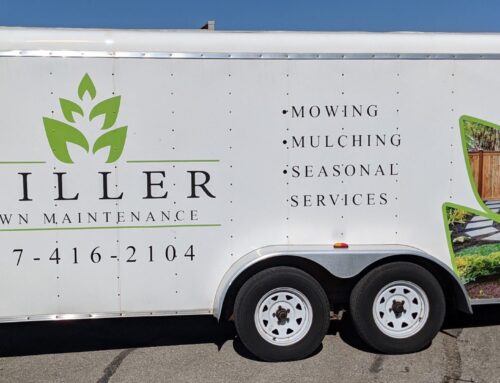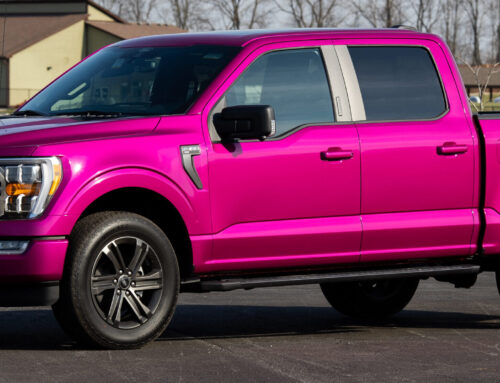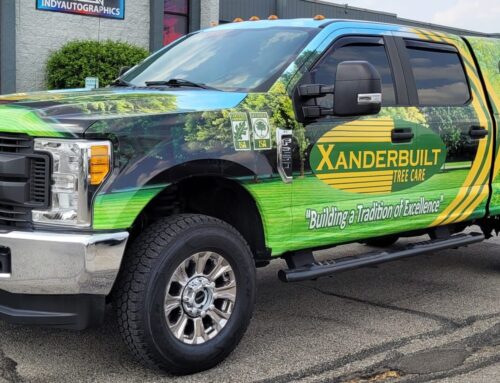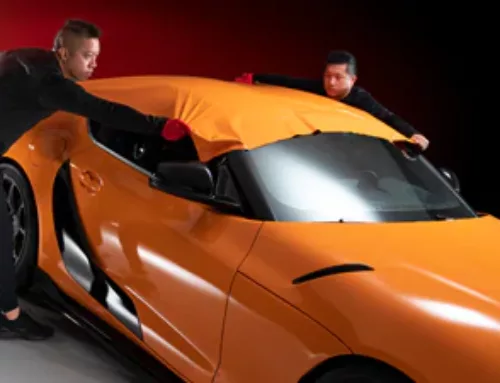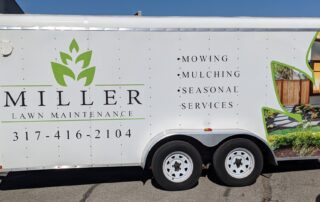We’d like to break down some Paint Protection Film (PPF) myths. There are some PPF companies out there that you have seen online or some sort of marketing campaign, and probably left you with questionable “truth or lies” on what PPF actually is and its limitations.
Some of it might be logical, but nevertheless, let’s start off by saying this. Even the best PPF does not make your car bulletproof. There is no magical film that will form a force field and solve all the potential hazards your paint is exposed to.
We’re going to explain exactly what PPF is and more importantly what PPF is not. We want to provide you with the correct information, so you can have realistic expectations on what a PPF is and how it performs. We want to equip you with the right information so you can make a good decision when choosing PPF for your car.
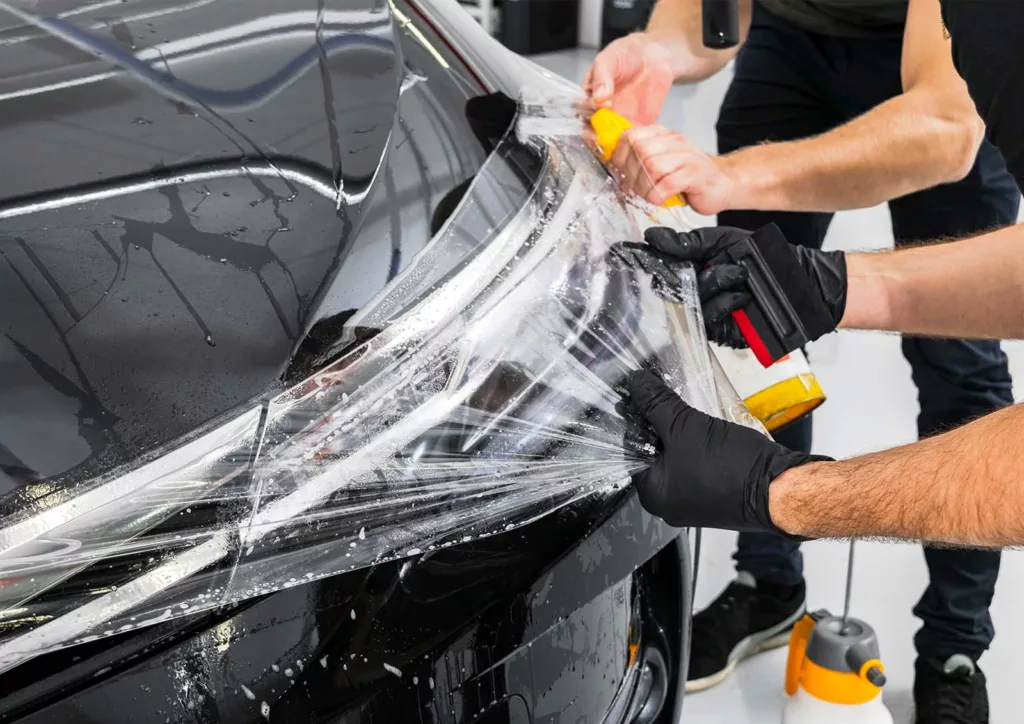
Is Vinyl the same as Paint Protection Film?
There seems to be a lot of confusion between Paint Protection Film and Vinyl Wrap (color changing wraps, wrap). Vinyl Wraps are used to change the aesthetic appearance of a vehicle. In most cases, Vinyl Wrap is used to change the color of the car or adding additional graphics, without the need of repainting the entire car. Vinyl Wraps offer a lot of customization but is much thinner than clear bra.
PPF is a much thicker, and heavier version of vinyl. Vinyl Wrap is a lighter substance and that is much more forgiving to install. PPF, on the other hand, is typically crystal clear, is much thicker, and self-heals when scratches occur. Paint Protection Film was designed to protect the original paint. Think of a large screen protector for your car. It does not enhance the aesthetic of your car. However, in recent years, PPF companies have started to develop “fashion PPF” which will turn the color of your vehicle into a matte or satin finish, carbon fiber finishes and colored finishes.
PPF is around 8-12 mils thick whereas vinyl wraps are somewhere around 4-mils, providing the car with little to no protection.
Will I see seams on my car?
The short answer is, yes. Wrapping edges will always be an art to PPF application. Even a properly wrapped edge can lift or peel due to the myriad of contours the film has to stick too. The film can hardly be noticed once it’s locked into place, but remember it’s called Paint PROTECTION Film, and not Paint PERFECTION Film.
There are two ways to install PPF on a vehicle:
- Custom or “Bulk” forming the PPF to the panel and then cut and roll the edges.
- Pre-Cut by a plotter to programmed sizes which allow the film to be 1/8th of an inch from all edges.
In most cases, installers state that Pre-Cut PPF is inferior because it leaves visible edges. While this used to be true, PPF Software have come a long way. This system eliminates the unnecessary damages of cutting PPF on the vehicle and accidentally cutting clear coat.
However, depending on the vehicle, we are able to wrap most edges by modifying the pattern and emblems can be removed prior to PPF installation. This eliminates the need to cut on a car and without removing body panels. Pre-Cut PPF stops 1/8th of an inch from the edge. This is not a bad way to install film and actually will prevent lifting or peeling up much better.
When you are doing your research, most of these installers will claim they are an “expert” at “Custom” PPF installations and promise they would never cut paint, stating that they install PPF on a daily basis. The film is 8-mils thick, and when doing custom installations, the installer has to score the film perfectly for 4-mils deep, hoping the razor blade doesn’t scratch or knick your paint. Well, no matter how good someone is, there will always be a human error. It only takes a millisecond of distraction for a panel to be potentially ruined. Is it worth the risk?
“Custom” installs will require headlights, taillights, side lamps, door handles, and panels to be removed so that the best install possible can be done. Imagine how many extra hours of work that would be, so there is a large cost associated with that. In fact, I would actually talk you out of it. They are simply sold to unassuming customers to pump up the PPF ticket price.
For the preservation of the vehicle, I believe it is preferable not to cut on any vehicle or remove panels when it isn’t necessary, ensuring the safety and integrity of all vehicle surfaces. Not only will your car’s panels have misalignment compared to factory standards, but most newer cars have electrical components that will require a certified technician to remove and install. The film is a sacrificial layer that protects against paint damages and will eventually have to be replaced due to wear and tear.
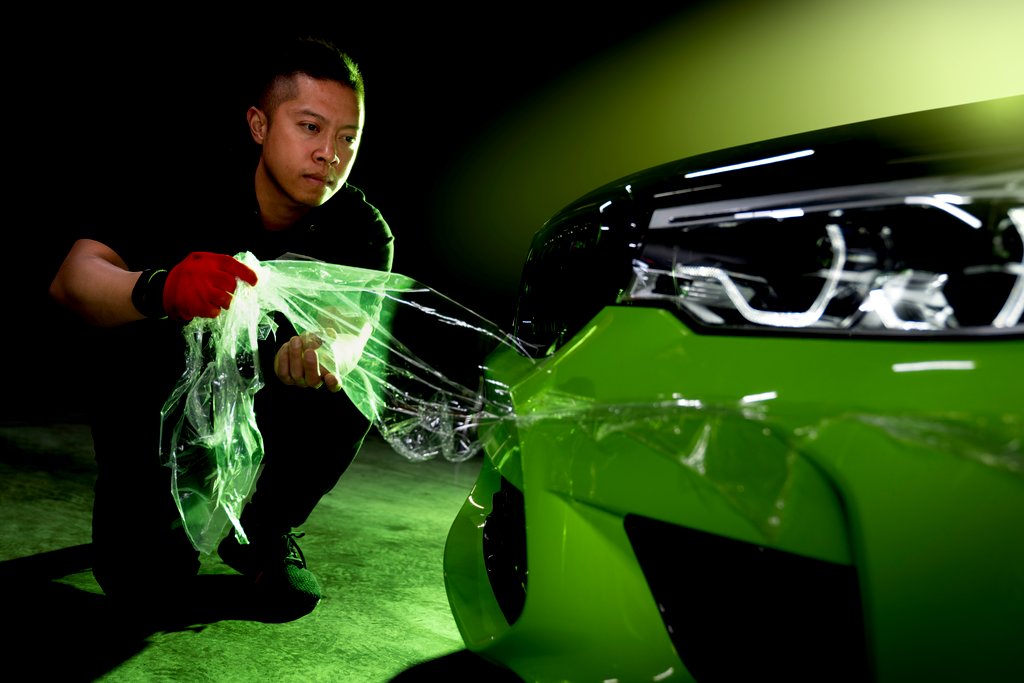
Will my PPF look perfect?
PPF installation is very difficult, time consuming, very intricate, and costly. The material isn’t cheap and if there is dirt, hair or silvering (film that is stretched too much) means that piece has to be replaced.
Bubbles, lift lines, and water under the film are common occurrences with every install. Lift lines are where a section has been laid then has to be lifted to remove an air bubble or speck of dirt. Air bubbles will evaporate over several days (or weeks, depending on weather) when the film is exposed to heat. If air bubbles are still on the film, the only way to remove it is to suck the air out with a needle. Expect these things to happen right after a PPF installation.
Most reputable installers will strive for perfection. Unless PPF is installed in an enclosed room with “space-age” filtration system and not a speck of dust, there will be some degree of dust contamination. Pre-existing flaws such as scratches, rock chips, debris in the clear coat, misaligned body panels, sanding marks are much more noticeable and magnified after PPF is applied. What may look like a speck of dust between the paint and the PPF, is actually dirt nibs in the clear coat. I have seen Ferraris and Lamborghinis with hair, fingerprints and dirt, painted over it.
In most cases, the condition of your vehicle also plays a huge part in a clean PPF installation. A swirl-free, scratch-free, rock-chip free, close to perfect finish is desirable. Even if your vehicle is brand new, it may have swirls, holograms, defects in the paint, minor scratches and other imperfections that needs to be removed. So, the first step in PPF installation is Paint Correction or any type of defect removal.
Will my PPF last forever?
Paint Protection Film is designed to be a sacrificial layer between the film and bare clear coat. Before investing into PPF, you need to understand the lifespan of the product. Longevity of PPF is realistically around 5 to 7 years depending on driving conditions, wear and tear, and the method of care. The Self-Healing properties will diminish over time. It’s just natural, due to wear and tear.
All PPF companies are competing for the longest warranty available to the public. The truth is, how many of these cars will actually still be owned in 10 years? Very few. PPF warranties are only recognized and registered if the installation company is certified to use their products. Like any car care and protection products, there are several variables that impact product longevity. The factors mentioned below play a big part in the lifespan of the clear bra:
- Surface Preparation
- The Installer
- The Environment of the Installation Facility
- Wear and Tear
- Additional Protection such as Ceramic Coatings and Proper Hand Washes
- Care and Maintenance

